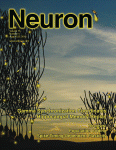J Neuroinflammation:阻断过度活化受体恢复阿尔茨海默氏症小鼠记忆功能
2013-06-19 Beyond 生物谷
近日,一项新的研究表明,老年小鼠阿尔茨海默氏症的病理记忆可以逆转得到恢复治疗。蒙特利尔神经学研究所、麦吉尔大学和蒙特利尔大学的研究人员的研究发现,阻断阿尔茨海默氏病(AD)小鼠大脑中的一个特定的受体的活性,能恢复记忆和脑功能。 研究结果发表在Journal of Neuroinflammation杂志上,新研究揭示了AD的基本机制,并标明该受体可作为一个潜在的新疗法靶标。 神经学家Edith
近日,一项新的研究表明,老年小鼠阿尔茨海默氏症的病理记忆可以逆转得到恢复治疗。蒙特利尔神经学研究所、麦吉尔大学和蒙特利尔大学的研究人员的研究发现,阻断阿尔茨海默氏病(AD)小鼠大脑中的一个特定的受体的活性,能恢复记忆和脑功能。
研究结果发表在Journal of Neuroinflammation杂志上,新研究揭示了AD的基本机制,并标明该受体可作为一个潜在的新疗法靶标。
神经学家Edith Hamel说:这项研究是令人兴奋的,因为这种分子甚至对动物晚期病理也效。研究人员发现,缓激肽B1受体(B1R)在AD小鼠脑组织中水平提高,该受体参与炎症反应。
分子选择性地阻止这种受体的作用后,研究人员观察到认知和脑功能得到了改进。阿尔茨海默氏病破坏神经细胞,也有损大脑中的血管功能。大脑血管的正常运作对提供营养和氧气给神经细胞是非常重要的,高龄老人的血管疾病是AD的重要危险因素。
另一个有趣的结果是小鼠模型中减少超过50%的毒性β-淀粉样肽,在阿尔茨海默氏病,蛋白质片段β-淀粉样蛋白对血液和神经系统产生有害影响,通常情况下这些蛋白质片段被分解并除去。
在阿尔茨海默氏病,蛋白质片段聚集在一起,影响神经细胞和血管功能。目前仍不知道如果β-淀粉样蛋白降低是否有助于功能的恢复。但结果显示,B1R增加与阿尔茨海默氏病小鼠记忆受损相关的β-淀粉样斑块相关,慢性封锁B1R后能显著提高学习,记忆,脑血管功能和AD其他几个病理标志。
总之,这些研究结果揭示了B1R在AD的发病机制,接下来的步骤将考察缓激肽B1R潜在阻滞剂对AD患者的治疗作用。

Cognitive and cerebrovascular improvements following kinin B1 receptor blockade in Alzheimer's disease mice.
BACKGROUND
Recent evidence suggests that the inducible kinin B1 receptor (B1R) contributes to pathogenic neuroinflammation induced by amyloid-beta (Abeta) peptide. The present study aims at identifying the cellular distribution and potentially detrimental role of B1R on cognitive and cerebrovascular functions in a mouse model of Alzheimer's disease (AD).
METHODS
Transgenic mice overexpressing a mutated form of the human amyloid precursor protein (APPSwe,Ind, line J20) were treated with a selective and brain penetrant B1R antagonist (SSR240612, 10 mg/kg/day for 5 or 10 weeks) or vehicle. The impact of B1R blockade was measured on i) spatial learning and memory performance in the Morris water maze, ii) cerebral blood flow (CBF) responses to sensory stimulation using laser Doppler flowmetry, and iii) reactivity of isolated cerebral arteries using online videomicroscopy. Abeta burden was quantified by ELISA and immunostaining, while other AD landmarks were measured by western blot and immunohistochemistry.
RESULTS
B1R protein levels were increased in APP mouse hippocampus and, prominently, in reactive astrocytes surrounding Abeta plaques. In APP mice, B1R antagonism with SSR240612 improved spatial learning, memory and normalized protein levels of the memory-related early gene Egr-1 in the dentate gyrus of the hippocampus. B1R antagonism restored sensory-evoked CBF responses, endothelium-dependent dilations, and normalized cerebrovascular protein levels of endothelial nitric oxide synthase and B2R. In addition, SSR240612 reduced (approximately 50%) microglial, but not astroglial, activation, brain levels of soluble Abeta1-42, diffuse and dense-core Abeta plaques, and it increased protein levels of the Abeta brain efflux transporter lipoprotein receptor-related protein-1 in cerebral microvessels.
CONCLUSION
These findings show a selective upregulation of astroglial B1R in the APP mouse brain, and the capacity of the B1R antagonist to abrogate amyloidosis, cerebrovascular and memory deficits. Collectively, these findings provide convincing evidence for a role of B1R in AD pathogenesis.
本网站所有内容来源注明为“梅斯医学”或“MedSci原创”的文字、图片和音视频资料,版权均属于梅斯医学所有。非经授权,任何媒体、网站或个人不得转载,授权转载时须注明来源为“梅斯医学”。其它来源的文章系转载文章,或“梅斯号”自媒体发布的文章,仅系出于传递更多信息之目的,本站仅负责审核内容合规,其内容不代表本站立场,本站不负责内容的准确性和版权。如果存在侵权、或不希望被转载的媒体或个人可与我们联系,我们将立即进行删除处理。
在此留言












#记忆功能#
54
#阿尔茨#
63
#LAM#
71
#阿尔茨海默氏#
64
#阻断#
66
#阿尔茨海#
53
#NFL#
47
#阿尔茨海默#
48
#inflammation#
64